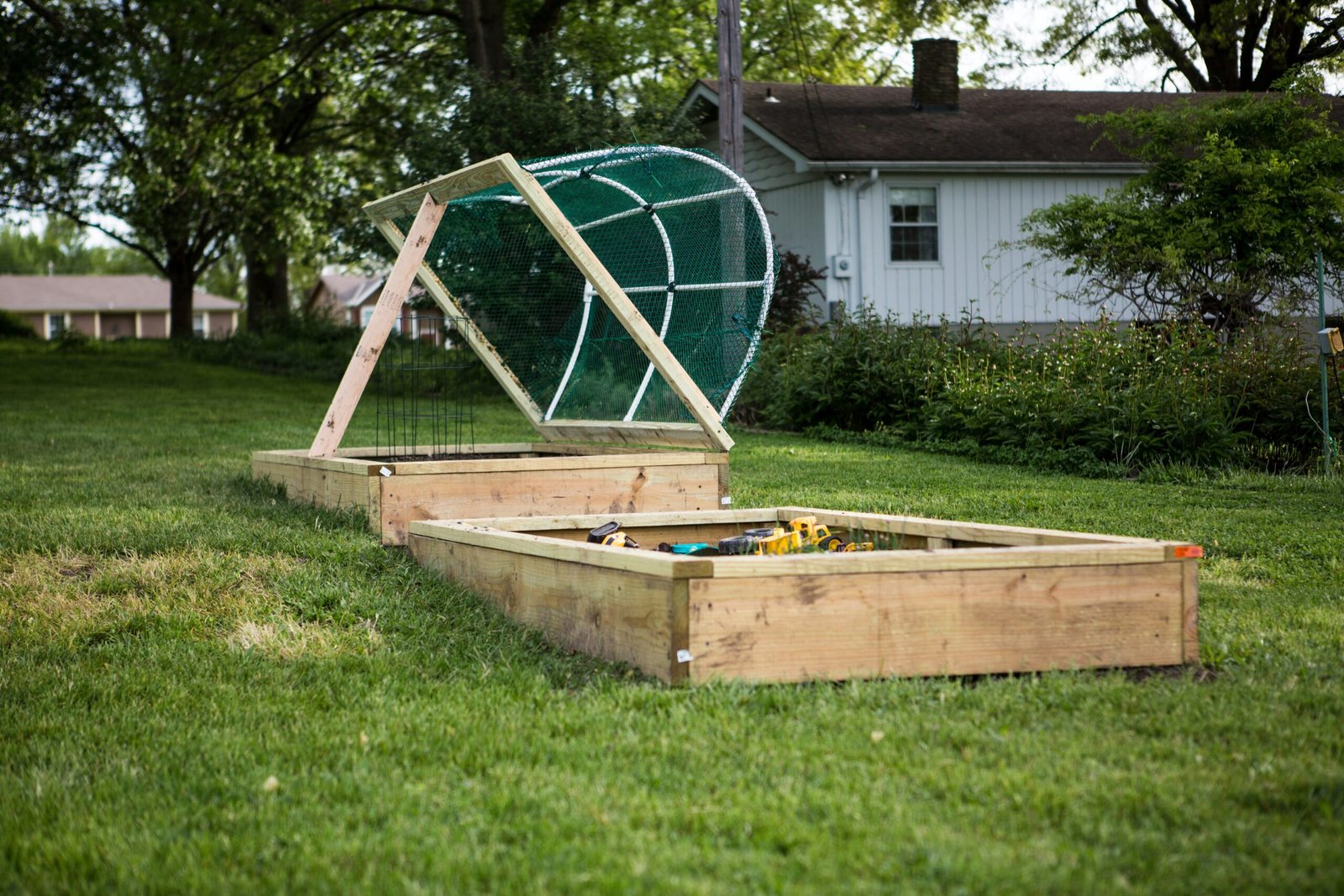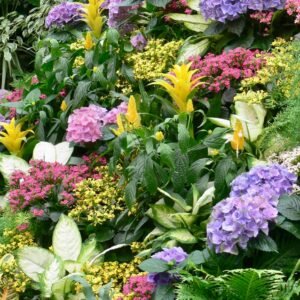Imagine transforming your dull and boring outdoor space into a charming and inviting oasis with the simple addition of rustic crate flower beds. These quaint wooden crates not only add a touch of natural beauty but also provide a creative way to showcase your favorite blooming flowers. Whether you have a sprawling garden or a tiny balcony, these versatile flower beds can be easily customized to fit any space. Get ready to elevate your outdoor area to new heights with these affordable and stylish crate flower beds.
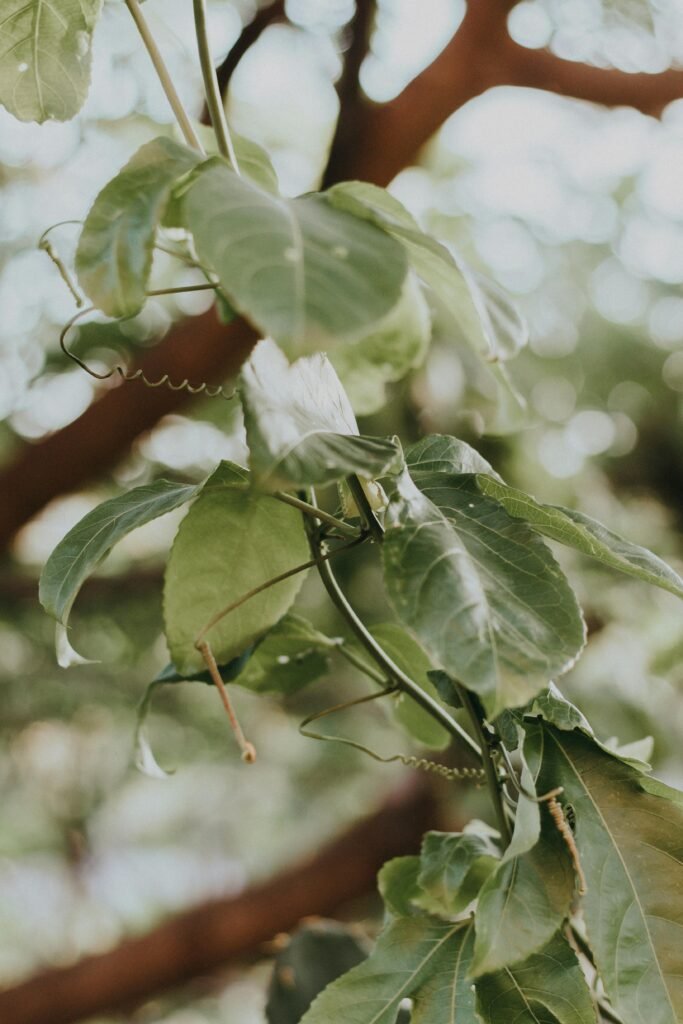
This image is property of images.pexels.com.
Choosing the Right Location for Your Rustic Crate Flower Bed
Considerations for Sunlight
When choosing the location for your rustic crate flower bed, one of the most important factors to consider is sunlight. Most flowers require at least six hours of direct sunlight each day to thrive. Take some time to observe the sunlight patterns in your yard throughout the day. Find an area that receives ample sunlight and is not obstructed by trees or buildings. This will allow your flowers to soak up the sun’s rays and flourish in your rustic crate flower bed.
Proximity to Water Source
Another crucial consideration when selecting the location for your rustic crate flower bed is its proximity to a water source. Flowers, like any other plants, need regular watering to stay healthy and vibrant. Ideally, your flower bed should be within reach of a hose or a watering can. This will make watering your flowers a convenient and efficient task. Remember to check any local regulations regarding water usage and conservation, as well as any watering restrictions that may be in place in your area.
Checking for Drainage
Lastly, it is essential to assess the drainage in the chosen location for your rustic crate flower bed. Poor drainage can lead to waterlogged soil, which can harm your flowers’ roots and cause them to wilt or rot. To check for adequate drainage, dig a small hole in the proposed spot and fill it with water. If the water drains within a reasonable time frame (around 24 hours), the drainage should be sufficient. If the water remains stagnant, you may need to amend the soil or consider a different location for your rustic crate flower bed.
Selecting the Perfect Rustic Crate
Material Options
When it comes to selecting the perfect rustic crate for your flower bed, you have several material options to choose from. The most commonly used materials for rustic crates include wood, metal, and plastic. Each material has its unique benefits and considerations. Wooden crates offer a natural and authentic rustic look, but they may require more maintenance, such as sealing and occasional painting or staining. Metal crates are durable and weather-resistant, but they can become hot in direct sunlight. Plastic crates are lightweight and resistant to rot, but they may lack the same rustic charm as wooden crates. Consider your preferences, climate, and budget when deciding on the material for your rustic crate flower bed.
Size and Shape
The size and shape of your rustic crate should align with your desired flower bed layout and the space available in your yard. Smaller crates are perfect for creating a compact flower bed or adding accents to existing garden areas. Larger crates can accommodate a greater number of flowers and create a more substantial focal point in your outdoor space. Additionally, some crates feature unique shapes, such as rectangular, square, or even tiered designs, allowing you to unleash your creativity and design a flower bed that suits your taste.
Considerations for Durability
Durability is an important factor to consider when selecting a rustic crate for your flower bed. Since the crate will be exposed to various weather conditions, it needs to withstand the elements and last for seasons to come. Look for crates made from sturdy and quality materials that can withstand rain, wind, and other outdoor factors. Additionally, consider the assembly and construction of the crate to ensure its stability. A durable rustic crate will not only protect your flowers but also maintain its aesthetic appeal for years.
Estimating the Number of Crates Needed
Before making a final decision on the number of rustic crates you’ll need, consider the size of your flower bed and the spacing you prefer between the crates. Measure the area where you plan to place the flower bed and calculate the surface area available. Then, take into account the dimensions of the rustic crates you are considering. Depending on the size and shape of the crates, you may need to adjust the number to achieve the desired look. Keep in mind that it’s always better to have a few extra crates than to run out of space when planting your flowers.
Preparing the Ground for Your Flower Bed
Clearing the Area
Before you start building your rustic crate flower bed, it’s important to clear the area of any existing vegetation, debris, or obstacles. Remove any grass, weeds, or plants that may interfere with the proper installation of your flower bed. Use a shovel, rake, or a garden tool appropriate for your specific needs to clear the ground thoroughly. This step will create a clean canvas for your flower bed and help prevent unwanted weeds from sprouting up in the future.
Leveling the Ground
After clearing the area, it’s crucial to ensure that the ground is level before installing your rustic crate flower bed. A level surface will help the crates sit evenly, providing stability and preventing any water accumulation. Use a level tool to check for any uneven areas and adjust accordingly. You can add or remove soil as needed to achieve a level ground. This step will help create a visually pleasing and structurally sound flower bed.
Adding Weed Barrier
To prevent weeds from invading your rustic crate flower bed, it’s wise to add a weed barrier before placing the crates. A weed barrier is a layer of material, such as landscape fabric or cardboard, that suppresses unwanted weed growth. Lay the weed barrier directly on the cleared and leveled ground, ensuring it covers the entire area. Cut holes or slits in the barrier where you plan to place the plants. This protective layer will save you time and effort in the long run by reducing the need for frequent weeding and maintenance.
Choosing the Right Flowers for Your Rustic Crate Flower Bed
Considerations for Sunlight and Shade
When selecting the flowers for your rustic crate flower bed, consider the amount of sunlight and shade the location receives. Different flowers have varying light requirements, and matching their needs to your garden’s conditions will increase their chances of success. Full-sun flowers, such as marigolds or sunflowers, need at least six hours of direct sunlight daily. Partial shade flowers, like impatiens or begonias, thrive in two to four hours of direct sunlight. Shade-loving flowers, such as hostas or astilbes, prefer minimal to no direct sunlight. By choosing flowers that align with your garden’s light conditions, you’ll create a harmonious and thriving flower bed.
Seasonality and Blooming Periods
Consider the seasonal aspect when choosing flowers for your rustic crate flower bed. Different flowers bloom during specific seasons, and planning your flower selection accordingly will ensure continuous color and beauty. Spring-blooming flowers, such as tulips or daffodils, bring vibrant colors to your garden early in the year. Summer-blooming flowers, including roses or zinnias, provide an explosion of colors and fragrances during the warmer months. Fall-blooming flowers, such as chrysanthemums or asters, add warmth and richness to your garden as the days shorten. By combining flowers with different blooming periods, you can create a visually dynamic flower bed that captures the essence of each season.
Factors to Enhance Visual Appeal
In addition to considering sunlight and blooming periods, there are other factors that can enhance the visual appeal of your rustic crate flower bed. Pay attention to color combinations and choose flowers that complement each other. For example, pairs of contrasting colors like purple and yellow or orange and blue can create an eye-catching display. Consider the height and texture of the flowers as well. Mixing tall, spiky flowers with low-growing, flowing ones can add depth and dimension to your flower bed. Finally, think about the overall theme or style you want to achieve and select flowers that align with it, whether it’s a vibrant and eclectic mix or a more subdued, monochromatic palette. The possibilities are endless, so have fun and let your creativity guide you.
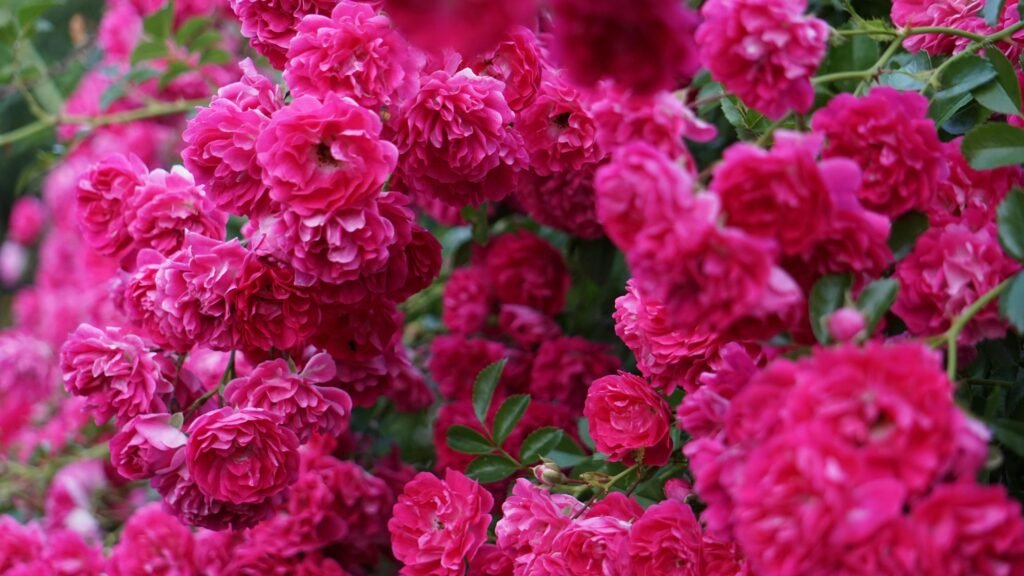
This image is property of images.pexels.com.
Planting Your Flowers in the Rustic Crate
Preparing the Crate
Before you start planting flowers in your rustic crate, some preparation steps will help ensure success. If your crate’s material is wood, it’s advisable to treat it with a sealant or a waterproofing agent to protect it from moisture. This step will extend the life of your crate and prevent water damage. Additionally, consider adding a layer of plastic sheeting or a porous landscape fabric to the inside of the crate to further protect it from direct contact with soil and moisture. These precautions will help maintain the integrity of your rustic crate while providing a healthy environment for your flowers.
Arranging the Flowers
When it’s time to plant your flowers, take into account the size and shape of your rustic crate. Taller flowers should be placed toward the back or center of the crate to create a pleasing height variation. You can arrange flowers in a symmetrical or asymmetrical pattern, depending on your preference. Consider the color, shape, and texture of the flowers and how they interact with each other when arranging them. Experiment with different layouts until you find a composition that satisfies your aesthetic vision.
Proper Planting Techniques
To ensure the health and longevity of your flowers, it’s important to follow proper planting techniques. Dig a hole in the soil that matches the size of the flower’s root ball. Gently remove the flower from its container, being careful not to damage the roots. Place the flower in the hole, making sure it sits at the same level as it did in its original container. Backfill the hole with soil and lightly tamp it down around the flower’s base to provide stability. Water the newly planted flowers thoroughly to settle the soil and remove any air pockets. Repeat this process for each flower, giving each one the individual care and attention it deserves.
Maintaining Your Rustic Crate Flower Bed
Watering and Irrigation
Regular watering is essential for the health of your flowers in a rustic crate flower bed. The frequency and amount of water needed will vary depending on the specific flower varieties and the climate in your area. Generally, it’s best to water deeply and infrequently rather than shallowly and frequently. This encourages the plants to develop deep, strong roots. Water in the early morning or late afternoon to minimize water loss due to evaporation, and avoid overhead watering to prevent the foliage from becoming overly wet and increasing the risk of disease. Consider using a drip irrigation system or soaker hoses to provide targeted watering and conserve water.
Weeding and Mulching
To keep your rustic crate flower bed looking neat and healthy, regular weeding is necessary. Weeds compete with your flowers for nutrients, water, and sunlight, so removing them promptly is crucial. Hand-pull weeds, ensuring you remove the roots to prevent regrowth. Applying a layer of organic mulch around your flowers can help suppress weed growth by blocking sunlight and providing insulation. Additionally, mulch helps retain moisture in the soil, regulates soil temperature, and adds an attractive finishing touch to your flower bed. Just be careful not to mulch directly against the stems of the flowers to prevent rot or fungal diseases.
Pruning and Deadheading
Pruning and deadheading are essential maintenance tasks for your rustic crate flower bed. Pruning involves removing any dead, damaged, or diseased parts of the flowers or plants. This not only improves the plant’s appearance but also promotes healthier growth. Deadheading refers to the removal of spent flowers to encourage continuous blooming and prevent seed production. Use clean and sharp pruning shears or scissors to make clean cuts, minimizing the risk of disease transmission. Regularly inspect your flowers and plants for any pruning or deadheading needs, and enjoy the benefits of a well-manicured and flourishing rustic crate flower bed.
Fertilizing the Soil
To keep your flowers thriving and ensure abundant blooms, regular fertilization is key. The specific fertilizer requirements will vary depending on the flower species, so it’s important to read the label instructions carefully. Generally, a balanced, slow-release fertilizer is recommended for flower beds. Apply the fertilizer as directed, usually in early spring and mid-summer, to provide the necessary nutrients for healthy growth. Avoid over-fertilizing, as this can lead to excessive foliage growth at the expense of flowers. Always water your flowers after fertilizing to help the nutrients penetrate the soil and reach the plant roots efficiently.
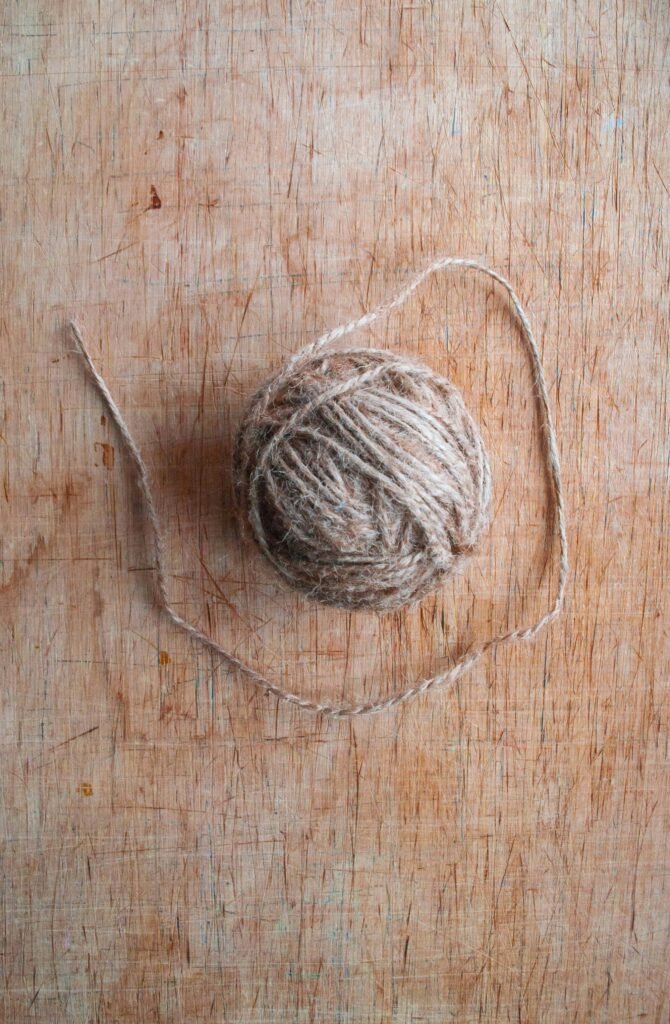
This image is property of images.unsplash.com.
Enhancing the Aesthetics of Your Rustic Crate Flower Bed
Adding Decorative Elements
To enhance the aesthetics of your rustic crate flower bed, consider adding decorative elements that complement the natural beauty of the flowers. Decorative elements can include items such as garden statues, trellises, birdbaths, or stepping stones. These additions can provide focal points, structure, and visual interest to your flower bed. When choosing decorative elements, ensure they are weather-resistant, durable, and suit the overall style and theme of your garden. These embellishments will help transform your rustic crate flower bed into a captivating and inviting outdoor space.
Using Companion Planting
Another way to enhance the aesthetics and functionality of your rustic crate flower bed is through companion planting. Companion planting involves pairing different flowers, herbs, or vegetables that benefit each other when grown together. For example, planting marigolds alongside tomatoes can repel pests and improve tomato growth. Pairing fragrant flowers, such as lavender or roses, with other flowers can provide a pleasant scent and attract pollinators. Research companion planting combinations that are suitable for your flower bed and experiment with different arrangements to create a harmonious and mutually beneficial environment for your plants.
Dealing with Pests and Diseases
Identifying Common Pests and Diseases
Inevitably, pests and diseases may find their way into your rustic crate flower bed. Identifying and understanding common pests and diseases will help you take appropriate action to mitigate their effects. Some common flower bed pests include aphids, slugs, snails, and caterpillars, while diseases like powdery mildew and fungal infections can also occur. Regularly inspect your plants for any signs of damage or disease, such as discolored or deformed leaves, holes, or wilting. Prompt identification will allow you to take effective measures and prevent further damage to your flowers.
Preventive Measures
Prevention is the best defense against pests and diseases in your rustic crate flower bed. Start by maintaining good overall plant health, which includes providing adequate sunlight, watering appropriately, and using proper planting techniques. Healthy plants are more resilient and can better withstand pest attacks and disease development. Additionally, practicing good garden hygiene, such as removing dead leaves or debris, can help eliminate potential hiding places for pests. Regularly inspect your flowers for signs of trouble, and take preventive measures, such as using organic pesticides or beneficial insects, before a problem escalates.
Natural Remedies
If pests or diseases do infiltrate your rustic crate flower bed, consider natural remedies to combat them. There are many eco-friendly options available that are safe for your flowers, beneficial insects, and the environment. For example, homemade insecticidal soaps made from mild ingredients like dish soap can help control aphids and other soft-bodied pests. Neem oil, derived from the seeds of the neem tree, is effective against a wide range of pests and also acts as a fungicide. Diatomaceous earth, a powdery substance made from fossilized algae, can deter slugs and snails. Research natural remedies suitable for the specific pests or diseases affecting your flowers, and test them on a small scale before applying them to your entire flower bed.
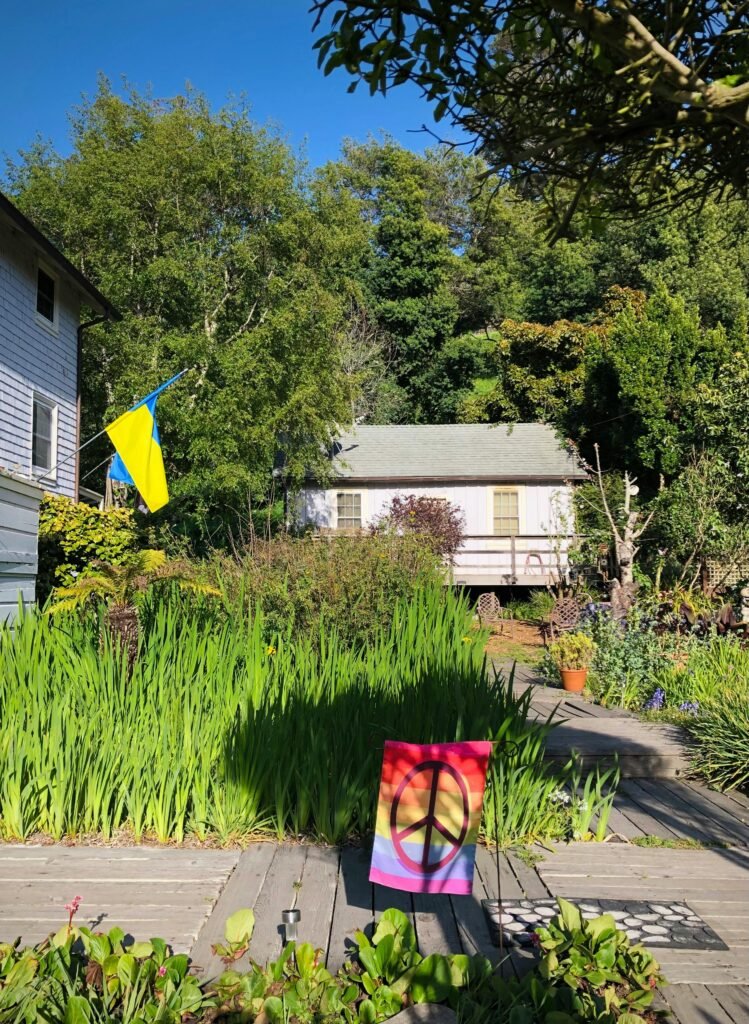
This image is property of images.pexels.com.
Extending the Flower Bed Seasonally
Choosing Winter-Friendly Flowers
Even in colder climates, you can still enjoy the beauty of your rustic crate flower bed throughout the winter season by selecting winter-friendly flowers. Winter-flowering plants, such as pansies, hellebores, or winter jasmine, can provide bursts of color and vitality during the colder months. These flowers are adapted to withstand chilly temperatures and can even thrive in snow. Research the winter-flowering options suitable for your specific region and add them to your rustic crate flower bed to extend its vibrancy and charm throughout the year.
Protective Measures for Cold Weather
To protect your flowers and maintain their health during cold weather, consider implementing protective measures in your rustic crate flower bed. One option is to cover the flower bed with a frost cloth or row cover during frosty nights. This material acts as insulation, trapping heat and preventing frost damage to the flowers. Another effective method is to apply a layer of mulch around the flowers to help regulate soil temperature and retain warmth. Additionally, consider relocating the flower bed to a more sheltered area, such as against a sunny wall or near a building, to provide natural protection from harsh winds.
Transitioning to Spring
As winter retreats and spring arrives, it’s time to transition your rustic crate flower bed for the new season. Remove any winter-flowering plants that have finished blooming and prepare the soil for spring planting. Prune any dead or damaged foliage, and add organic matter or compost to replenish the soil’s nutrients. Consider adding early-blooming flowers, such as tulips, daffodils, or pansies, to kick-start the spring display in your flower bed. By seamlessly transitioning your rustic crate flower bed from winter to spring, you can enjoy the changing seasons and the ever-evolving beauty it brings.
Repurposing and Upcycling Ideas for Rustic Crates
Creating Vertical Gardens
One exciting way to repurpose rustic crates is by creating vertical gardens. Vertical gardens are perfect for small spaces or as decorative accents on walls or fences. Mount crates horizontally or vertically and fill each crate with soil and flowers. You can mix and match different flower varieties or focus on a specific color palette for each crate. Hang the crates at varying heights to create an eye-catching display. Vertical gardens not only add a unique touch to your outdoor space but also maximize the use of limited space and provide an opportunity to showcase your creativity.
Building Herb or Vegetable Gardens
Rustic crates can also be repurposed into functional herb or vegetable gardens. The compartments of the crate provide separate spaces for each herb or vegetable plant, allowing easy organization and maintenance. Fill each compartment with nutrient-rich soil and plant your favorite herbs or vegetables. Consider grouping similar plants together based on their water and sunlight requirements. Label each compartment for easy identification and to foster herb or vegetable garden organization. This repurposing idea not only adds practicality to your rustic crate but also allows you to grow fresh ingredients right at your fingertips.
In conclusion, rustic crate flower beds offer a charming and versatile way to enhance your outdoor space. By considering factors such as sunlight, water source, and drainage, you can select the perfect location for your flower bed. Choose the right rustic crate based on considerations like material, size, and durability. Prepare the ground by clearing the area, leveling the ground, and adding a weed barrier. When selecting flowers, consider sunlight, shade, seasonality, and visual appeal. Follow proper planting techniques and provide adequate maintenance, including watering, weeding, pruning, and fertilizing. Enhance the aesthetics by adding decorative elements and utilizing companion planting. Deal with pests and diseases through identification, preventive measures, and natural remedies. Extend the flower bed seasonally by choosing winter-friendly flowers, implementing protective measures, and transitioning to spring. Finally, explore repurposing ideas for your rustic crates, such as creating vertical gardens or building herb and vegetable gardens. With careful planning and maintenance, your rustic crate flower bed will bloom beautifully and bring joy to your outdoor space.
